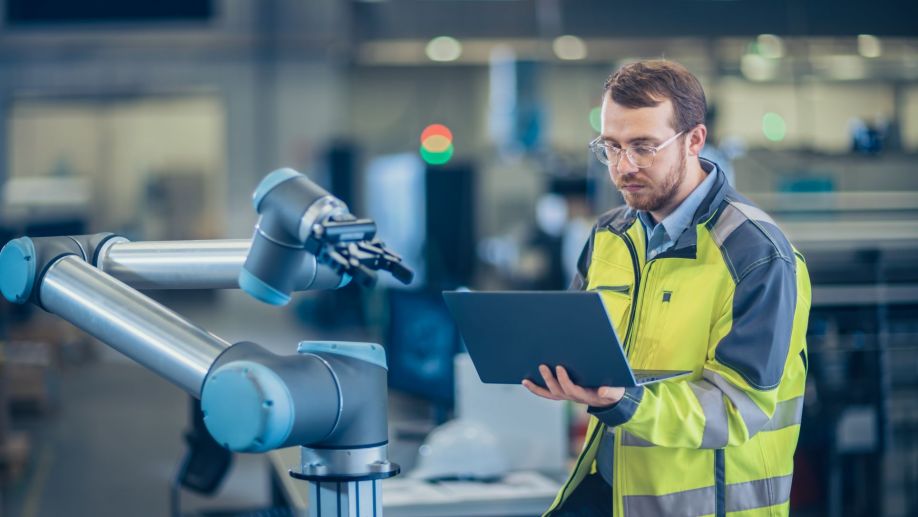Three lessons learned at Automate 2022

According to a report by Oxford Economics, faster adoption of automation could equate to an extra $4.9 trillion per year to the global economy by 2030. That’s equivalent to an economy greater in size than Germany. Where better to learn about this potential than America’s largest showcase of automation, Automate 2022? Claudia Jarrett, US country manager at automation parts supplier, EU Automation, examines the three biggest trends from this year’s show.
Prescriptive maintenance
With ample opportunities to save engineering expenditure and reduce the likelihood of downtime, maintenance technologies were among the first to undergo a process of digitalization. For several years already, manufacturers have deployed sensors to collect performance data from assets and undertake predictive maintenance. In practice, this sees maintenance engineers acting on an asset only when it shows sign of wear and tear.
But now, maintenance technologies are advancing further. Machine learning (ML) is becoming a ubiquitous feature in many asset management technologies. For instance, the software that gathers data from our aforementioned sensors can analyze data consistently to trends and intelligently schedule maintenance.
For prescriptive maintenance to be effective, a ML model needs to be trained onto the sensor or software. The higher quality the data, the more accurate the maintenance suggestions will be. Prescriptive maintenance isn’t a plug-and-play option and can take several stages of investment to come to fruition, but in the coming years this technology is likely to become more commonplace.
Automating at the edge
Businesses that are already years into their digitalization journey will understand the need for edge computing. While factories have become smarter, more complex and often produced higher volumes of data than ever before, some have suffered with slower processing speeds as a result. Funneling this mass of data through a centralized network can cause bottlenecks and latency, yet edge computing resolves this challenge.
Edge computing describes data processing that takes place closer to — or on edge — of a device. Rather than waiting for data to be processed elsewhere, an edge-enabled device can achieve faster analysis and correction. For instance, if the device was to monitor pipes and identify flow through issues, it can adjust automatically using decentralized artificial intelligence (AI).
While edge is a hot topic, the feasibility and best practices of the technology are still under debate. Does edge computing as software-as-a-service (SaaS) improve accessibility? And, what is the best cloud model to work in conjunction with the edge? These were just some questions posed at the show. I suspect at the next Automate show, we will have more use cases for this tech and a better understanding of its potential.
Robots-as-a-service (RaaS)
Last year set a record for the number of robots sold in North America, with 39,708 units deployed, according to the Association for Advancing Automation (A3). Despite rising by 28 per cent since the previous year, North America is still significantly lower than other leading nations, such as Japan, Germany, the Republic of Korea and many others.
Among many extraordinary exhibitors at Automate were several companies offering RaaS. As the name suggests, RaaS allows manufactures to install robotics in their facilities on service-led basis. Essentially leasing the machines and a cloud-based subscription rather than manufacturers buying the robots outright. RaaS is hailed as a way for small and medium-sized manufacturers to benefit from the productivity gains of robots, without needing such a high initial investment.
An interesting development in this model is the speed in which it is growing. Industrial robotics manufacturer, Kuka, has recently scaled its RaaS offering to launch a Smart Factory as a Service (SFaaS) option, in which customers can rent out an entire automated plant with robots, software and more. This new offering demonstrates that service-based automation options are not just for those dipping their toes into automation, but is a feasible business model for all manufacturing players.
As the first Automate since before the pandemic, it has been refreshing to see the continued pace of change in automation — despite the challenging and uncertain climate. Faster adoption of automation has masses of potential for the global economy and, as demonstrated at the show, the industry is continuing to develop new, exciting technologies to facilitate this growth. At EU Automation, we are already looking forward to the tech we will see next time.
Comments (0)
This post does not have any comments. Be the first to leave a comment below.
Featured Product

